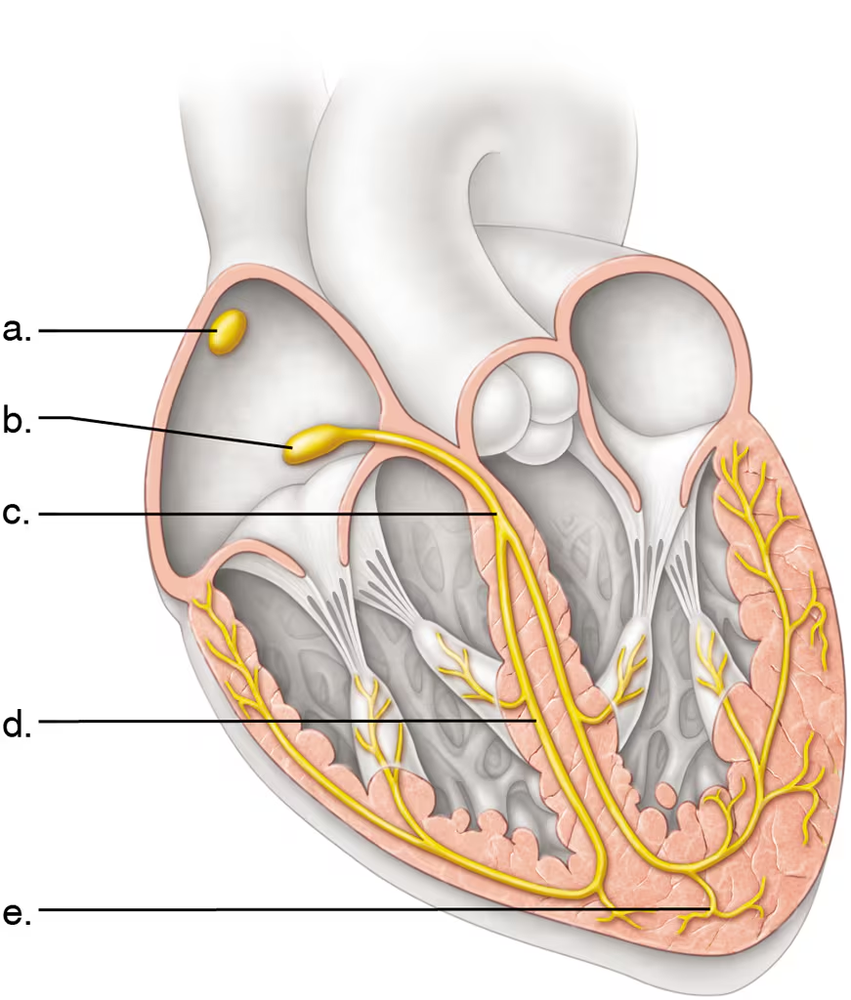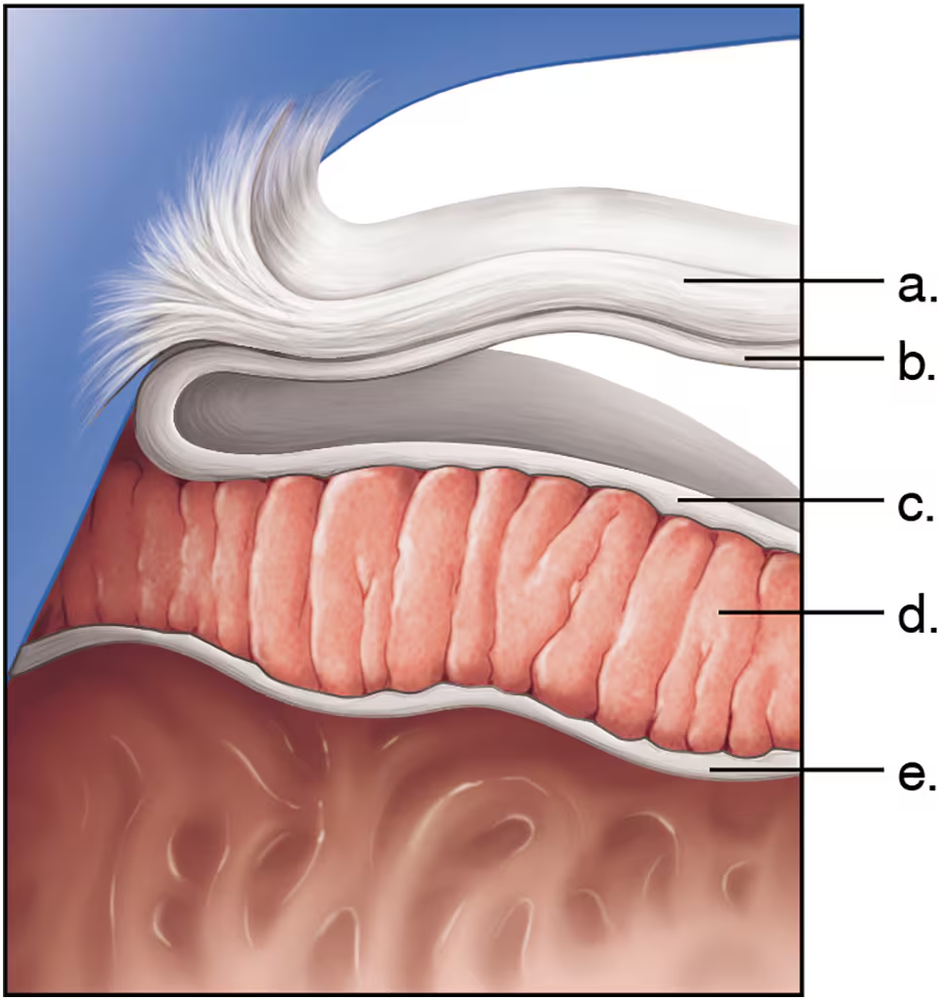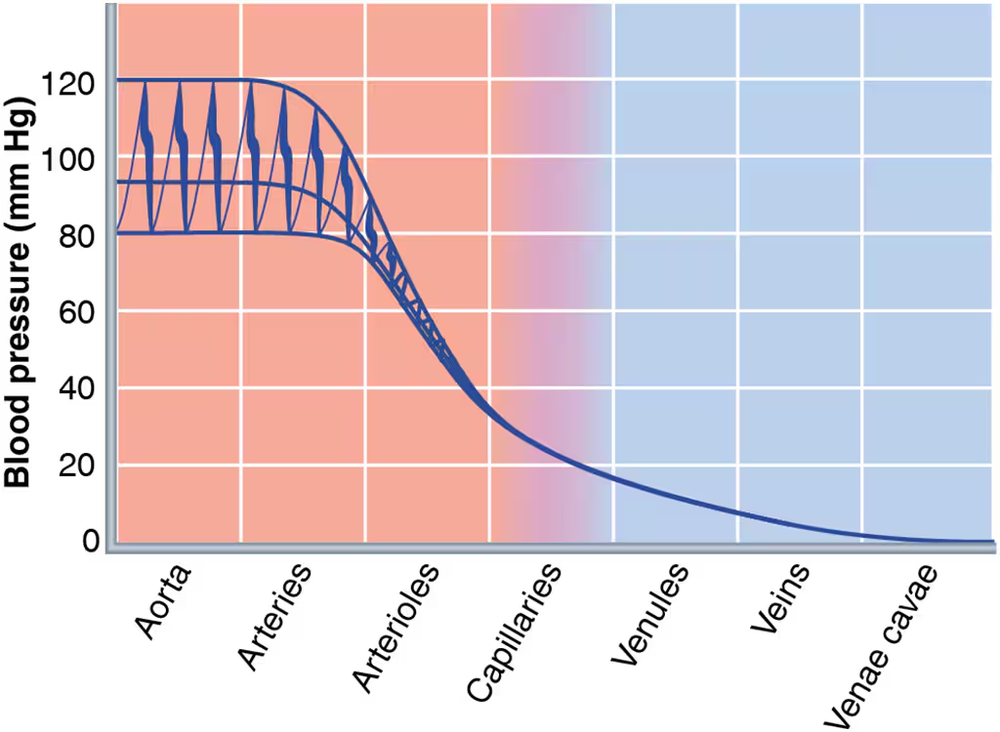 Back
BackProblem 1
More than one choice may apply.
Pulmonary veins deliver freshly oxygenated blood from the lungs to the
a. right ventricle
b. left ventricle
c. right atrium
d. left atrium
Problem 2
More than one choice may apply.
Given a volume of 150 ml at the end of diastole, a volume of 50 ml at the end of systole, and a heart rate of 60 bpm, the cardiac output is
a. 600 ml/min
b. 6 liters/min
c. 1200 ml/min
d. 3 liters/min
Problem 3
More than one choice may apply.
Which of the following depolarizes next after the AV node?
Problem 4
More than one choice may apply.
During atrial systole,
a. The atrial pressure exceeds ventricular pressure.
b. 70 percent of ventricular filling occurs.
c. The AV valves are open.
d. Valves prevent backflow into the great veins.
Problem 5
More than one choice may apply.
Atrial repolarization coincides in time with the
a. P wave
b. T wave
c. QRS wave
d. P-Q interval
Problem 6
More than one choice may apply.
Soon after the onset of ventricular systole, the
a. AV valves close.
b. semilunar valves open.
c. first heart sound is heard.
d. aortic pressure increases.
Problem 8
In comparing a parallel artery and vein, you would find that
a. The artery wall is thicker
b. The artery diameter is greater
c. The artery lumen is smaller
d. The artery endothelium is thicker
Problem 9
More than one choice may apply.
Which of these vessels is bilaterally symmetrical (i.e., one vessel of the pair occurs on each side of the body)?
a. Internal carotid artery
b. Brachiocephalic trunk
c. Azygos vein
d. Renal vein
Problem 10
More than one choice may apply.
A stroke that occludes a posterior cerebral artery will most likely affect
a. Hearing
b. Vision
c. Smell
d. Higher thought processes
Problem 11
More than one choice may apply.
Vessels involved in the circulatory pathway to and/or from the brain are the
a. Brachiocephalic trunk
b. Subclavian artery
c. Internal jugular vein
d. Internal carotid artery
Problem 12
More than one choice may apply.
Which layer of the artery wall thickens most in atherosclerosis?
a. Tunica media
b. Tunica intima
c. Tunica adventitia
d. Tunica externa
Problem 13
More than one choice may apply.
Which of the following are associated with aging?
a. Increasing blood pressure
b. Weakening of venous valves
c. Arteriosclerosis
d. Collapse of the ductus arteriosus
Problem 14
More than one choice may apply.
An increase in BP would be caused by all of the following except
a. Increase in SV
b. Increase in heart rate
c. Hemorrhage
d. Vasoconstriction of the arterioles
Problem 15
More than one choice may apply.
Using the figure, identify the most external part of the pericardium.
Problem 16
More than one choice may apply.
Which heart chamber pumps blood with the greatest amount of force?
a. Right atrium
b. Right ventricle
c. Left atrium
d. Left ventricle
Problem 17
More than one choice may apply.
How many cusps does the right atrioventricular valve have?
a. Two
b. Three
c. Four
d. Six
Problem 19
More than one choice may apply.
Using the figure, determine which vessels have the most resistance.
a. Arteries
b. Veins
c. Capillaries
d. Arterioles
e. Venules
Problem 20
Draw a diagram of the heart showing the three layers composing its wall and its four chambers. Label each. Show where the AV and semilunar valves are, and name them. Show and label all blood vessels entering and leaving the heart chambers.
Problem 21
Trace one drop of blood from the time it enters the right atrium of the heart until it enters the left atrium. What is this circuit called?
Problem 22
How does the heart's ability to contract differ from that of other muscles of the body?
Problem 23
Name three different factors that increase heart rate.
Problem 24
Name three factors that are important in promoting venous return.
Problem 25
Capillary permeability increase and plasma proteins leak into the interstitial fluid as part of the inflammatory process. Why is this desirable?
Problem 25
What is the function of the hepatic portal circulation? In what way is a portal circulation a 'strange' circulation?
Problem 27
Two elements determine blood pressure—the cardiac output of the heart and the peripheral resistance, or friction, in the blood vessels. Name two factors that increase cardiac output. Name two factors that increase peripheral resistance.
Problem 28
John is a 30-year-old man who is overweight and smokes. He has been diagnosed with hypertension and arteriosclerosis. Define each of these conditions. How are they often related? Why is hypertension called the 'silent killer'? Name three changes in your lifestyle that might help prevent cardiovascular disease in your old age.
Problem 29
Mrs. Hamad, a middle-aged woman, is admitted to the coronary care unit with a diagnosis of left ventricular failure resulting from a myocardial infarction. Her chart indicates that she was awakened in the middle of the night by severe chest pain. Her skin is pale and cold, and moist sounds of pulmonary edema are heard over the lower regions of both lungs. Explain how failure of the left ventricle might cause these signs and symptoms.
Problem 30
Mrs. Rees is brought to the emergency room after being involved in an auto accident. She is hemorrhaging and has a rapid pulse that can barely be felt, but her blood pressure is still within normal limits. Describe the compensatory mechanisms that are maintaining her blood pressure in the face of blood loss.
Problem 31
Mr. Grimaldi was previously diagnosed as having a posterior pituitary tumor that causes hypersecretion of ADH. He comes to the clinic regularly to have his blood pressure checked. Would you expect his blood pressure to be chronically elevated or depressed? Why?



